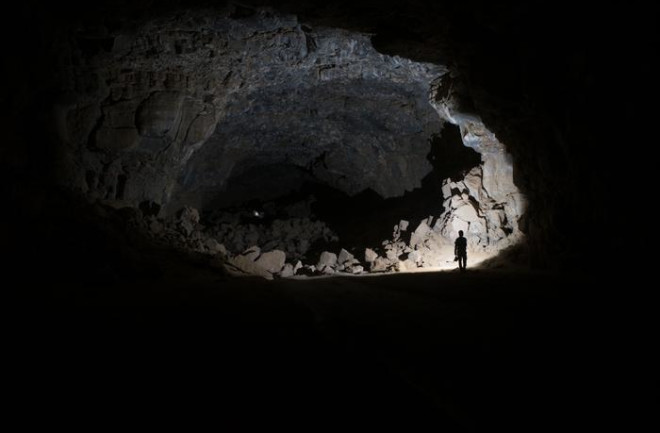Taking the tube in modern London means using the subway system for transportation. Going down the tube in Holocene-Era Saudi Arabia probably referred to employing underground tunnels for temporary shelter.
A new study in the journal PLoS One paints a picture of how human herders lived over the past 7,000 years in a sometimes harsh desert environment. That lifestyle has remained relatively unknown due to poor preservation of organic remains in the region’s arid conditions, until the recent study.
Down the Tubes
A team of archeologists turned to a lava tube network about 75 miles north of Medina hoping to find traces of living matter. The Saudi Geological Survey has spent the last few decades locating and mapping cave and lava tube sites across the country, including one they called Umm Jirsan.
A team of archeologists read reports about the area and chose it for further exploration, because the tunnels would protect organic matter from sun, wind, and high fluctuations in temperature, says Matthew Stewart, a postdoc with Griffith University of Brisbane, and one of the paper’s authors.
The area was also ideal for exploration because it was relatively easy to locate and access. They found several large openings — likely the result of roof collapses — for entry.
Read More: Massive Ochre Cave Paintings are Traces of Ancient Human Migration in the Amazon
Signs of Life
The archeologists found artifacts, rock art, and skeletal remains within the tunnel system. The art and animal bones documented a pastoral life of people herding sheep and goats. But the relative absence of stone tool fragments — what archeologists call lithic —demonstrates that peoples’ time in the tunnels was relatively transitory.
“That people only spent short periods of time is based on the low density of lithic we found from the excavation, as well as in the broader area,” says Stewart. “There is, at present, no evidence to suggest extensive or substantial occupations of the cave.”
However, the archeologists did find signs tracking the rise of agriculture in the area. They examined human remains and found isotopic traces of fruits and cereals. The chemical signatures they found matched C3 plants. Many domesticated crops are C3 plants, and the name refers to a specific process of photosynthesis.
“We can see that there is a through-time increase in the consumption of such resources,” says Stewart. “Interestingly, this lines up quite well with the emergence of agriculture in Arabia, which took the form of oasis agriculture in the Bronze Age.”
Although the archaeologists’ work shows thus far no signs of long-term occupation, they will continue researching the site for other indicators.
Read More: 5 of the World's Most Fascinating Cave Paintings
Article Sources
Our writers at Discovermagazine.com use peer-reviewed studies and high-quality sources for our articles, and our editors review for scientific accuracy and editorial standards. Review the sources used below for this article:
Matthew Stewart. Postdoc with Griffith University of Brisbane
Before joining Discover Magazine, Paul Smaglik spent over 20 years as a science journalist, specializing in U.S. life science policy and global scientific career issues. He began his career in newspapers, but switched to scientific magazines. His work has appeared in publications including Science News, Science, Nature, and Scientific American.

